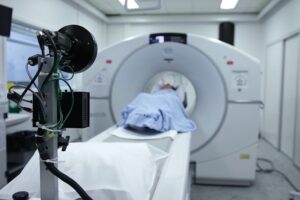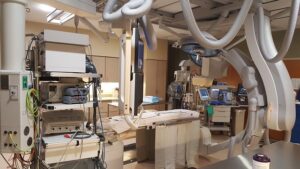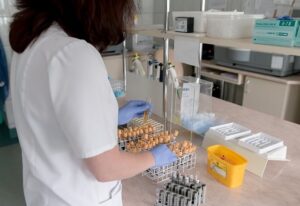Managing ARDS in Immunosuppressed Organ Transplant Patients
Managing ARDS in Immunosuppressed Organ Transplant Patients
Acute Respiratory Distress Syndrome (ARDS) is a life-threatening condition characterized by sudden respiratory failure due to inflammation of the lungs, typically following injury or infection. For organ transplant recipients, this condition presents additional challenges, particularly due to their immunosuppressive therapy, which is necessary to prevent organ rejection. This article explores the interplay between ARDS and the unique needs of immunosuppressed transplant patients, offering insight into management strategies, potential complications, and practical approaches to improve patient outcomes.
Understanding ARDS
ARDS is diagnosed based on clinical criteria and imaging studies. The Berlin definition identifies three categories—mild, moderate, and severe—based on the degree of hypoxemia. The underlying causes of ARDS can be varied and may include pneumonia, sepsis, trauma, or aspiration, among others. Recognizing these causes is essential in tailoring management strategies specific to the patient’s situation.
In transplant patients, ARDS can further complicate an already vulnerable clinical situation, as they may have underlying health issues and be at an increased risk for infections due to immune suppression. Immune suppression reduces the body’s ability to fight infections, potentially aggravating pulmonary complications and hindering recovery from ARDS.
- Understanding the pathophysiology of ARDS is crucial in developing appropriate management strategies.
- Identifying the etiology of ARDS can help in early intervention and treatment.
- Patients may experience a range of symptoms, including tachypnea, hypoxemia, and reduced lung compliance.
Risk Factors in Immunosuppressed Patients
Immunosuppressed organ transplant patients face elevated risks for developing ARDS. Key factors include the type of organ transplanted, the underlying disease, and the duration and intensity of immunosuppression. These factors can predispose patients to pulmonary infections, which are common triggers of ARDS.
Risks associated with immunosuppressed transplant patients include:
- **Increased susceptibility to infections:** Due to the use of medications such as corticosteroids and calcineurin inhibitors, these patients present a higher risk for various pulmonary pathogens.
- **Altered lung immunity:** Changes in cellular defense mechanisms may lead to an exaggerated inflammatory response or ineffective resolution of lung injury.
- **Territorial lung changes:** Pre-existing lung conditions, acute rejection episodes, or other comorbidities may further contribute to reduced pulmonary function.
Diagnostic Approaches
Accurate and timely diagnosis of ARDS in immunosuppressed organ transplant patients is critical to initiate appropriate treatment. A combination of clinical assessment, laboratory tests, and imaging studies should be employed for diagnosis. The following steps are typically involved:
- **Clinical Evaluation:** Respiratory symptoms should be thoroughly assessed, particularly in the context of recent transplant surgery or immunosuppressive therapy.
- **Imaging Studies:** Chest X-rays and CT scans help evaluate for bilateral opacities, consolidations, or effusions consistent with ARDS.
- **Laboratory Tests:** Arterial blood gases, inflammatory markers (e.g., C-reactive protein), and microbiological cultures may be necessary for diagnostics.
Close monitoring, including pulse oximetry and possibly arterial blood gas analysis, is essential in understanding the severity of the respiratory compromise and guiding treatment decisions.
Management Strategies
Management of ARDS in organ transplant patients involves a multi-faceted approach tailored to individual needs. Key components of successful management include:
1. Supportive Care
Supportive care forms the backbone of ARDS management.
- **Oxygen Therapy:** Allow for sufficient oxygenation through supplemental oxygen or mechanical ventilation depending on the severity of hypoxemia.
- **Fluid Management:** Careful fluid management is critical as it can prevent fluid overload, a common complication in ARDS patients.
- **Nutritional Support:** Ensuring adequate nutrition is vital to support recovery and immune function.
2. Pharmacological Interventions
Beyond supportive care, pharmacologic interventions may be required.
- **Antibiotics:** Empirical antibiotics can be considered for suspected infections. Caution is necessary due to altered drug metabolism in immunosuppressed patients.
- **Corticosteroids:** Corticosteroids may help attenuate the inflammatory response leading to lung injury; however, benefits need to be weighed against associated risks.
- **Other Immunomodulators:** Agents like tocilizumab could be explored in select cases based on the clinical scenario.
3. Prevention of Ventilator-Associated Pneumonia
Preventing complications from ventilator support is crucial, particularly in this vulnerable population.
- **Elevate the head of the bed:** A minimum of 30 degrees can minimize the risk of aspiration.
- **Oral care:** Implement regular oral care protocols to reduce the microbial load in the oral cavity.
- **Early extubation:** When medically feasible, early extubation can reduce the duration of mechanical ventilation and lower the risk of infection.
Monitoring and Follow-Up
Continual monitoring is essential during the management of ARDS in organ transplant patients. Key considerations include:
- **Oxygen Saturation Monitoring:** Frequent checks to detect hypoxemia early.
- **Lung Function Tests:** Monitoring lung compliance, tidal volumes, and other pulmonary function metrics.
- **Vigilance for Infections:** Ongoing surveillance for nosocomial infections, given the high risk during hospitalization.
Follow-up care post-discharge is equally critical. Patients should undergo routine clinical evaluations to ensure the recovery of pulmonary function and address any lingering complications.
FAQs
Below are some frequently asked questions about ARDS in immunosuppressed organ transplant patients:
1. What are the early signs of ARDS in transplant patients?
Early signs may include sudden onset of labored breathing, confusion or disorientation, cough, and increased heart rate. These symptoms may indicate a need for immediate medical evaluation.
2. How can ARDS be differentiated from acute rejection?
Differentiating ARDS from acute rejection can be challenging. Typically, ARDS is associated with respiratory symptoms following infection or lung injury, while acute rejection may present with systemic symptoms or fluctuations in transplant organ function.
3. Is it safe to use corticosteroids in ARDS management?
Corticosteroids can be beneficial in ARDS, but their use should be weighed against potential complications in immunosuppressed patients, including infection risk. It is crucial to follow clinical guidelines tailored to this population.
Conclusion
Managing ARDS in immunosuppressed organ transplant patients is a complex but essential endeavor. Understanding individual risk factors, providing targeted supportive care, and preventing complications are critical aspects of effective management. As research continues to evolve and shed light on ARDS in this unique population, ongoing education and collaborative care are fundamental in ensuring the best possible outcomes for these patients.
For additional reading and resources, the following articles are beneficial:
- NEJM on ARDS management
- PubMed Central on immunosuppression in transplant patients
- ATS on ARDS clinical practice guidelines
Sharing this information can empower patients, caregivers, and healthcare providers to better understand and manage ARDS within the context of organ transplantation. As we advance our knowledge and approaches, the prospects for improving outcomes in this vulnerable population continue to grow.
About ARDS and Post-ARDS
ARDS (Acute Respiratory Distress Syndrome) is a life-threatening condition typically treated in an Intensive Care Unit (ICU). While ARDS itself is addressed during the ICU stay, recovery doesn’t end with discharge; patients then embark on a journey of healing from the effects of having had ARDS.
Disclaimer
The information provided in ARDS Alliance articles is for general informational and educational purposes only and is not a substitute for professional medical advice, diagnosis, or treatment. While we strive to present accurate, current information, the field of Acute Respiratory Distress Syndrome (ARDS) and related healthcare practices evolve rapidly, and ARDS Alliance makes no guarantee regarding the completeness, reliability, or suitability of the content.
Always seek the advice of qualified healthcare professionals with any questions you may have regarding a medical condition. Never disregard professional medical advice or delay seeking it because of information you read in ARDS Alliance articles. ARDS Alliance, its authors, contributors, and partners are not liable for any decision made or action taken based on the information provided in these articles.
About ARDS Alliance
Our mission is to improve the quality of life for ALL those affected by ARDS.
The ARDS Alliance is a non-profit committed to raising awareness and enhancing the understanding of Acute Respiratory Distress Syndrome (ARDS), a severe lung condition often occurring in critically ill patients. Through developing alliances, it unites various organizations and experts striving to improve care and support research aimed at finding more effective treatments. Their efforts include educating the public and healthcare providers about ARDS symptoms, risk factors, and advancements in treatment, ensuring better patient outcomes and resource availability.

I am committed to improving the lives of those affected by acute respiratory distress syndrome. Our organization provides resources and support to patients, families, and healthcare professionals. Together, we work towards raising awareness and advancing research in order to find better treatments and ultimately a cure.
~ Paula Blonski
President, ARDS Alliance






